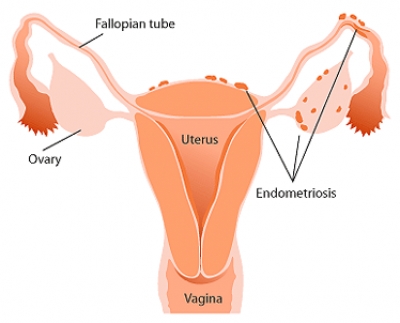Endometriosis is a relatively common condition that can cause significant pain and suffering. Overall, between 3-10% of women aged between 15-45 years have endometriosis. In women who have difficulties conceiving, this rises to about 25-35%.
Endometriosis is small deposits of the womb lining that are located outside of the womb cavity. The most common place to find it is on the ovary, the back of the uterus and the uterosacral ligaments. It can also be found on the peritoneum, on the tubes or between the vagina and rectum (rectovaginal septum).
Each time that you have a normal period, so does this endometriosis, and this leads to cyclical swelling, stretching of tissues, inflammation and scarring. Eventually all the scarring and inflammation can lead to symptoms even when you’re not having a period.
The most common problems are:
- Pelvic pain
- Painful periods
- Pain during intercourse
- Infertility
The link between endometriosis and infertility is sometimes difficult to explain. When the disease is so bad that there is much scarring around the tubes, or there are ovarian cysts, it is not surprising that this interferes with normal fertility. But it is less clear how a few small spots of endometriosis might have a detrimental effect on attempts at pregnancy. Nevertheless, studies have found that endometriosis is more common in women who have difficulty conceiving.
Treatments for endometriosis
There are several options for treating endometriosis, and each has its place for different women’s disease. The options are as follows:
- No treatment at all
- Management of symptoms, e.g. using painkillers.
- Medical management, e.g. suppressing endometriosis, usually with GnRH agonists or the birth control pill.
- Conservative surgery, e.g. Laparoscopic surgery.
- Radical surgery, e.g. Hysterectomy.
Once the extent of your endometriosis has been evaluated your options would be reviewed and a specific course of treatment recommended.


